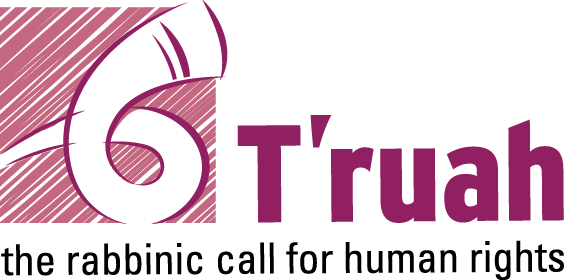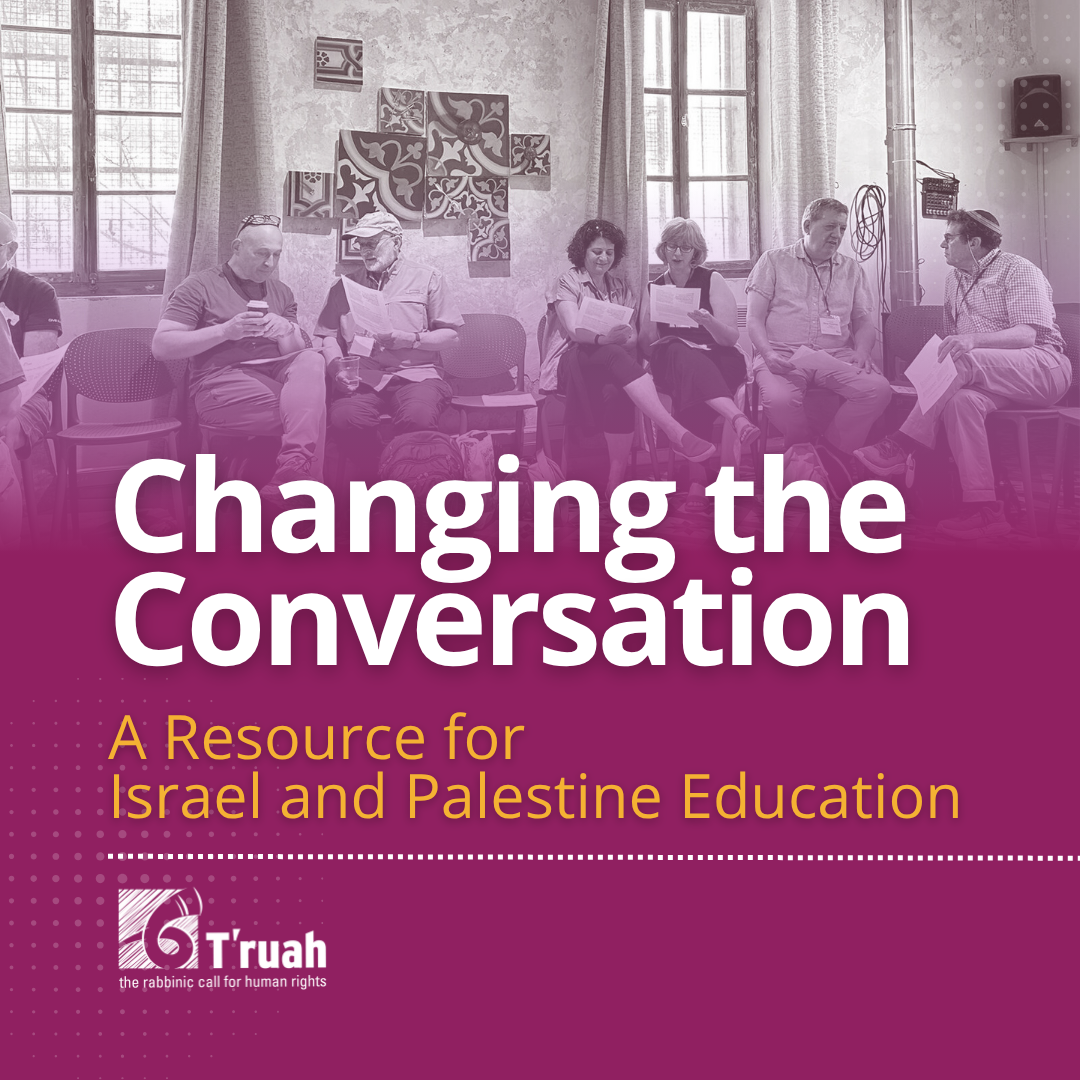Want to read this resource as a pdf? Download here.
What is this resource?
In this moment of heartbreak, overwhelm, and moral reckoning, many of us are searching for ways to have authentic conversations about the realities on the ground in Israel and Palestine. So many in our communities are yearning to connect with people in the region and connect with each other around these issues but fear that they can’t speak honestly. Many clergy have reached out to T’ruah looking for educational resources aligned with T’ruah’s values that can help communities engage with Israel and Palestine with depth, nuance, and care. This resource is for clergy and educators with communities committed to brokering honest and values-based conversations about Israel and Palestine.
This resource includes a curated book recommendation list for kids and adults, discussion guides for three books, and documentary screening and discussion guides for two important films. No matter where your community falls on the political spectrum, there is something for them here.
No two communities are alike. That’s why we’ve indicated which resources are best suited for different types of communities. The guide can be used with adult learners, teens, or intergenerational groups. We invite you to adapt what’s here, and we’d love to hear how you use it.
What is included in this resource?
How to use this resource
1. Reflect on your community’s needs.
Begin by asking:
- Where is my community now?
- What conversations do I hope they can engage in after one session? In 3 months? A year?
- What kinds of resources and conversations will help them get there?
2. Identify key questions
Select 1–5 specific questions that feel urgent or important for your community. Specificity helps you choose the most relevant resources. For example, “What’s it like to be a Palestinian in the West Bank?” vs. “How did we get here?” are related, but different questions and are answered with slightly different resources (memoir vs. history book).
3. Choose 1–2 resources
Pick 1–2 resources that can help explore your chosen questions.
4. Plan the learning environment
Think about what framing or scaffolding might help ease people into the conversation:
- Should you start with emotional check-ins, a niggun, a meditation, or personal storytelling?
- What should the physical space look like to invite open conversation? Set up chairs in a cozy circle and welcome people at the door as they walk in to set the tone.
- Your goal is to move the group from defensiveness and certainty to openness and curiosity. Design the space, physically and emotionally, to make it feel safe for open dialogue.
5. Supplement creatively
Consider adding art, music, or poetry to deepen engagement and add an additional human element to the conversation.
5. Anticipate emotions
- Reflect on what emotions may come up for your learners in advance.
- Acknowledge that these conversations may bring up strong feelings.
- Name them early and think through how to support participants afterward.
6. Plan for follow up
Deep conversations don’t end when the session does. Consider what continued support or next steps your community might need: another session, informal gatherings, or specific pastoral care.

